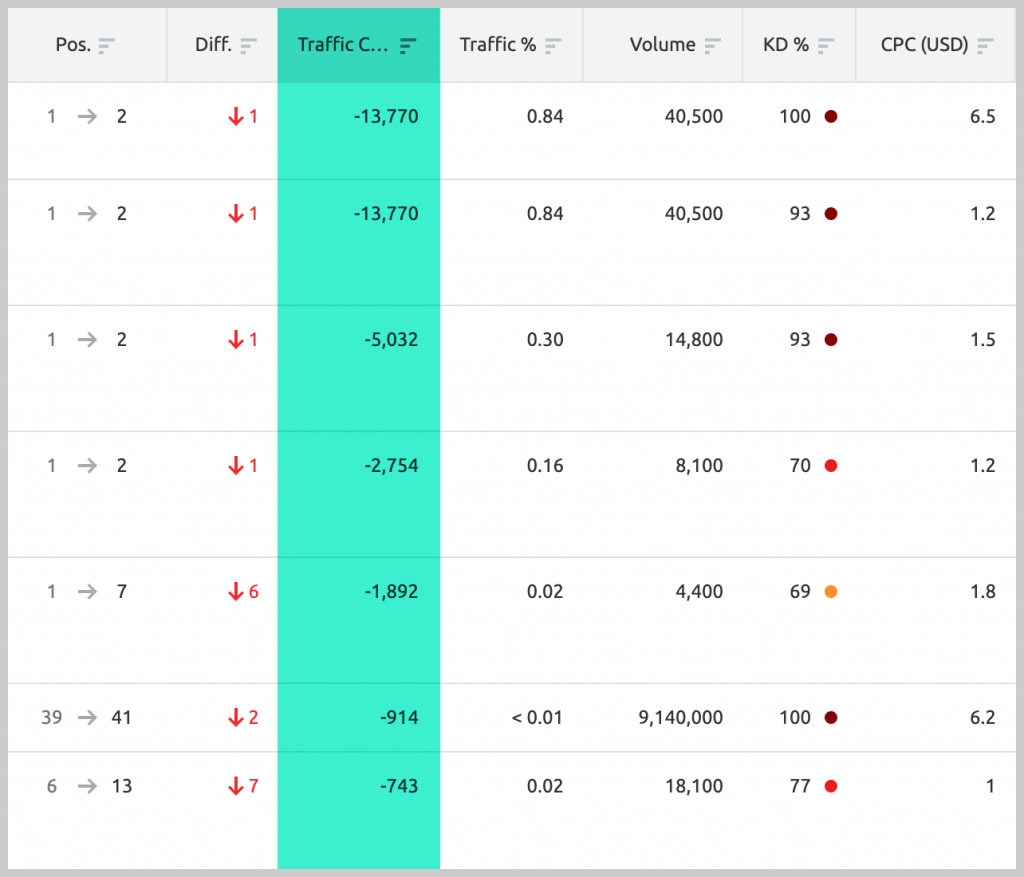How to Optimize Existing Content & Why it Matters
This is the tenth post in our new content series, No Fluffs Given. We’re tired of the fluffy content in our LinkedIn feeds, with no real substance or actionable takeaways. So we’re teaming up with some of the best B2B marketers we know. People who have ACTUALLY done this stuff before. And giving you new, actionable tactics to implement today.
At this point, you have probably heard someone say that you should be refreshing your content or maybe saw yet another up-and-to-the-right chart posted on Linkedin.
But what does that mean?
Well, when you move past some of the gimmicks or quick hacks to get a temporary boost in traffic, content optimization emerges as a sub-discipline within the world of SEO & content marketing.
As such, it requires the same level of attention and process as things like optimizing PPC landing pages or A/B testing automation flows. It isn’t the core discipline but improves performance and should be done on a regular (if not recurring) basis.
The Metadata team was kind enough to let me share my experience with you on why it matters and how to identify the opportunities, implement the right solution, and do it at scale.
Why all high-performing content programs include optimizing existing content
In my time leading Demand Gen & Acquisition at Sprout Social, we scaled the blog to 1 million sessions per month. As early as 2016, we saw the benefits of optimizing some of our existing blog content that had begun to decline in performance.
Over time, it went from “cool, that worked” to “wow, this keeps working” to “let’s do this every month” to eventually a point where we were publishing more optimized pieces each month than new content.
As I began speaking with others and studying similar companies, it was clear that every team with a significant content production was doing something similar.
Shopify, G2, Hubspot, and even sites like Motley Fool were all optimizing existing content to some extent.
The reality is that content decay is natural, and when you are in a competitive space AND producing a lot of content, it can happen rapidly.
But it isn’t all about fixing what has gone wrong. The process of analyzing existing content uncovers new growth opportunities as well.
So, high-performing content programs make content optimization a core part of their process to remain competitive, prevent the decay from working against overall growth, and continuously find new opportunities to expand and scale awareness, traffic, and conversions.
3 ways to spot opportunities for optimization
There are several ways to identify content to optimize or refresh, so I am breaking down the three that I’ve found to be the most common and most effective across a wide range of blogs.
1. Look for declining performance
Declining performance is probably the most common and easy to understand. You look at the traffic and conversions over time, and they are trending downward. This steady decline works against any new content you create and often results in a net negative outcome for conversions.

2. Find content sitting on page 2
In Google Search Console, you can look at the specific queries aligned to each blog post. In many cases, you may have posts or pages that are getting decent traffic, but upon closer inspection, realize that most of the queries matching to that content are ranking on the second page of Google.

3. Spot internal competition
As your content program grows, you naturally have more and more pages that talk about similar topics, which increases the likelihood of internal competition.
Internal competition is when a single keyword matches multiple URLs on your site, creating confusion for search engines as they don’t know the priority. Internal competition typically results in most or all of those URLs having degraded performance.
5 approaches to optimize existing content
As you identify good candidates for optimization, you need to figure out how you are going to do that. The truth is that each situation is unique, and it depends, but that isn’t helpful.
At Sprout, we eventually reached a point where we classified the solutions into three tiers, roughly corresponding to the level of effort required. This system helped a lot with capacity planning and systematizing our solutions to be highly efficient each month.
Here are the five most common approaches companies take to optimize existing content:
1. Expand
Content has slowly become longer over the years, so it is relatively common to find a blog post from a few years prior that is quite short.
Word count is relative, so in this case, it comes down to how long the posts are that are ranking on page one of the search engines and how long it takes to cover the topic of the blog post thoroughly.
i.e., don’t write 800 words about how to build a tiny home yourself or 3,000 words on how to change a drill bit.
In many cases, you can assess what is missing from the post and expand it to cover the topic in full.
2. Update
In some cases, the blog post covers the topic pretty well, but some of the content is outdated.
For example, at Sprout Social, we created the Always Up-to-Date Image Sizes Guide for all social network image sizes.

This blog post required frequent updating to make sure the content was fresh and entirely relevant.
3. Create
There are times when search demand grows for a topic that is currently only a small section on one of your blog posts.
That post may be ranking for a few queries related to that topic, but the opportunity lies in creating a new, full post on that topic and then linking to it from the section on the existing one.
This solution is more focused on growth and expansion than trying to mitigate decline and can be extremely helpful when you are scaling up your company blog.
4. Consolidate
Consolidating content is typically the best solution to the internal competition problem mentioned before.
Content consolidation involves combining multiple posts into existing ones or an entirely new post altogether, then setting up 301 redirects from the consolidated URLs to the new, final URL.
The consolidated content creates a better experience for your prospects and customers trying to consume the content. Also, it sends a positive signal to the search engines, saying, “We cleaned up this mess that was creating problems for you and organized it all right here.”
5. Links
In some cases, the content fully covers the topic, is up to date, is of good quality, and isn’t competing with other internal URLs. Many times, this content needs more backlinks, more internal links, or both.
Look at the number of backlinks and internal links for the content ranking on the first page of Google to see if your post is low and needs more.
An easy way to find internal link opportunities is to use Google.

In this example, there are several pages that mention “Facebook Image Sizes” that could be linked together.
Bonus: Prune
I’ve included content pruning as a bonus. It isn’t optimizing specific posts, but it can work well.
Instead of consolidating content and redirecting URLs, sometimes you find old, lame content on your site that isn’t doing anything positive for you and isn’t worth keeping.
In this case, delete it and make your site tidier.
Best practices for implementing at scale
As I noted before, content optimization is a discipline that requires processes and systems to be effective as possible.
Here are some of the best practices I’ve learned from scaling content operations at Sprout Social and now doing this for several companies.
1. Analyze quarterly
When you get ramped up, you’ll probably be analyzing your existing content every month. To get started, make it a point to analyze your content every quarter to identify posts that need to be fixed or have upside potential.
Analyzing your data helps you stay on top of it, and like most things, what gets scheduled gets done.
2. Dedicate bandwidth
Most content teams create a consistent volume of content each month because that makes planning, budgeting, and consistency easier.
If you are like most teams, that’s 4-8 posts per month. I’ve done as high as 30/month and talked with folks who have done 100+/mo.
Regardless, a pretty easy starting point is to dedicate 25% of your current publishing bandwidth to optimizing existing content.
So, if you are currently publishing 8 per month, start doing two optimizations per month and six new posts per month and go from there.
The important part is that you carve out space for it and make it a priority and an expectation.
3. Align with teams
One area that can hang up a team from making this a consistent process is collaborating with other teams.
If you are frequently coming across older content, you may need new imagery or product shots or be required to verify with subject matter experts how to update the content from a technical standpoint.
Make sure you factor any outside dependencies into your timing and process, just like you would for new content, to make sure it becomes a smooth process.
Next steps for optimizing existing content
If you haven’t ever tried optimizing the content you already have, give it a shot on 3-5 posts you identify as good candidates.
If you’ve been doing it for a while, but are inconsistent, consider building out a process to make it a recurring discipline for your company.
If you want to learn more, subscribe to the Ten Speed Blog, where we frequently write on all things content optimization and strategy.
Meet Nate Turner
Co-founder & CEO of Ten Speed.
Nate Turner is a SaaS marketing leader. He was the first marketer at Sprout Social, where he built and scaled the inbound engine from $100k to $100m in ARR. He is now the co-founder and CEO of tenspeed.io, a content optimization agency helping SaaS & D2C companies create revenue-generating content and an advisor for SaaS companies.


